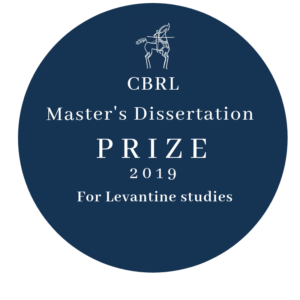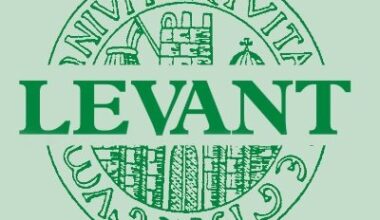Last year, we launched the first CBRL Master’s dissertation prize, inviting UK based heads of departments and chairs of departmental examination boards to nominate one Master’s first-class dissertation in Levantine archaeology, history or contemporary studies.
We’re thrilled to announce the first prize, many congratulations to the winner of CBRL’s 2019 Master’s Dissertation Prize – Jonathan Gordon who graduated with an MSc in Environmental Archaeology from UCL.
Jonathan’s dissertation entitled, ‘Investigating avian palaeoecologies in the Northern Jordan Valley in the Epipalaeolithic and Early Neolithic: a structural and quantitative analysis of archaeological avifaunal assemblages alongside extant avifaunal communities in the Southern Levant’, was found to be “thorough and innovative, promising wider implications for research in the region” by the prize evaluating committee made up of CBRL trustees.
It was Professor Rosemary Hollis’s generous donation that allowed us to launch this prize last year. We look forward to continuing these competitions in the years to come to encourage graduate scholarship on the Levant.
Here is an abstract of Jonathan’s dissertation:
Framed by the climatic fluctuations of the Pleistocene/Holocene transition, the period encompassing the southern Levantine Epipalaeolithic and early Neolithic was characterised by transformations in human subsistence and mobility practices, in tandem with fundamental shifts in human-environment relationships. Palaeoecological information provides crucial context for interpreting these changes, however, the usefulness of avian osteological remains in informing on the palaeoecologies of archaeological sites has previously been largely overlooked. My dissertation therefore applies a novel, quantitative technique, ‘community structure analysis’, to investigate the palaeoecologies of four northern Jordan Valley archaeological sites: Ain Mallaha (Eynan), Ohalo II, Gilgal I and Netiv Hagdud. Using multivariate statistical techniques, these analyses reveal the broadly non-analogue nature of these Epipalaeolithic and early Neolithic archaeological avian assemblages in relation to the modern avian communities of Israel and Palestine. I suggest an interplay between climate and environmental change, human action, taphonomy and possible methodological limitations as the potential explanation. My analyses also highlight temporal changes in regional avian ecologies, supporting suggestions of changing hunting strategies and a broadening of the human diet from the Epipalaeolithic to the Early Natufian in the southern Levant.
 Jonathan Gordon graduated in October 2019 from University College London with an MSc in Environmental Archaeology, with a focus on the reconstruction and investigation of changing human-animal relationships over the late Pleistocene and early Holocene. In September, he will begin a PhD at the Leverhulme Centre for Anthropocene Biodiversity at the University of York, investigating regional biodiversity change over the Anthropocene, assessing the relative influence of humans on this change.
Jonathan Gordon graduated in October 2019 from University College London with an MSc in Environmental Archaeology, with a focus on the reconstruction and investigation of changing human-animal relationships over the late Pleistocene and early Holocene. In September, he will begin a PhD at the Leverhulme Centre for Anthropocene Biodiversity at the University of York, investigating regional biodiversity change over the Anthropocene, assessing the relative influence of humans on this change.
















